Who should get this
Musicians wanting to record songs without a big upfront hardware investment have long relied on their computer’s basic audio capabilities to capture and digitize tracks. But those serious about boosting the quality of their setup will soon realize the shortcomings of built-in hardware. Recordings can be noisy, and you are typically limited to capturing only one instrument or vocal track at a time. Relying on USB to connect a microphone also restricts your selection to mics with a USB output. Though mics in that category are fine for basic recording applications like podcasting, the options aren’t anywhere near as extensive as regular models that output analog audio over an XLR or ¼-inch jack—especially when it comes to specialized mics for recording musical instruments.
For all these reasons and more, a USB audio interface will benefit musicians looking to expand their recording capabilities.
How we picked and tested
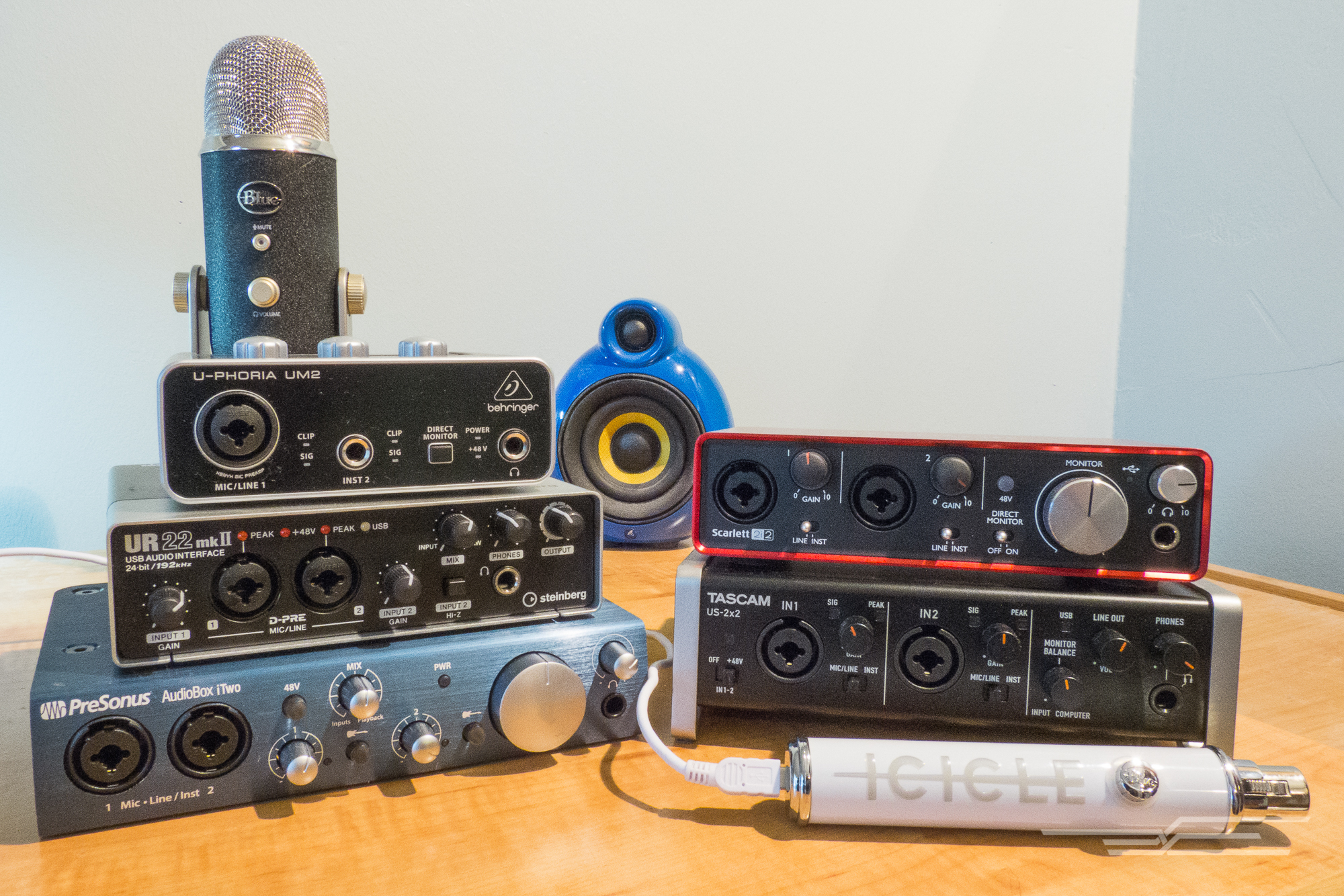
Photo: Al Griffin
To narrow down the choices for musicians and others doing basic recording, we scoured sites including Amazon, Sweetwater, and Musician’s Friend and looked for products that satisfied a select list of criteria. These included a hi-Z input or plugging in an electric guitar or keyboard without additional hardware, zero-latency hardware direct monitoring, a pair of inputs, and more; see our full guide for the rest.
When we surveyed the field it became clear that models capable of capturing audio at 24-bit bit depth and a 96 kHz sampling rate have become the norm. Though that high level of resolution can make sense for projects where archival quality is desired, it isn’t necessarily a requirement for most recordings. Not having that capability ultimately wasn’t a dealbreaker.
We also eliminated products that received complaints in user reviews about insufficient gain (input volume) when using phantom power with condenser microphones.
We tested the Tascam US-2×2, PreSonus AudioBox iTwo, Focusrite Scarlett 2i2, Steinberg UR22mkII, Behringer U-Phoria UM2, and Blue Microphones Icicle. To evaluate their audio performance, design ergonomics, and ease of setup, we spent time with each model in a home studio, recording both vocal and electric guitar samples using GarageBand on a MacBook Pro, and Cubasis LE on an iPad.
We then recorded samples of vocals and acoustic instruments—in this case, harp. Using two popular and affordable condenser mics, a Blue Microphones Yeti Pro (using its analog output) for harp and an MXL V63M for vocals, we recorded performances. After swapping out USB interfaces, we repeated each performance so to capture samples with the various units at 24-bit/44.1 kHz resolution in GarageBand on a MacBook Pro.
Once the samples were edited, we normalized the volume for each track (to make sure listeners weren’t responding to minor differences in levels), exported them as AIFF files, and uploaded them in uncompressed format to Soundcloud. This enabled our expert listening panel to evaluate them using their own headphones and USB DACs.
Our pick
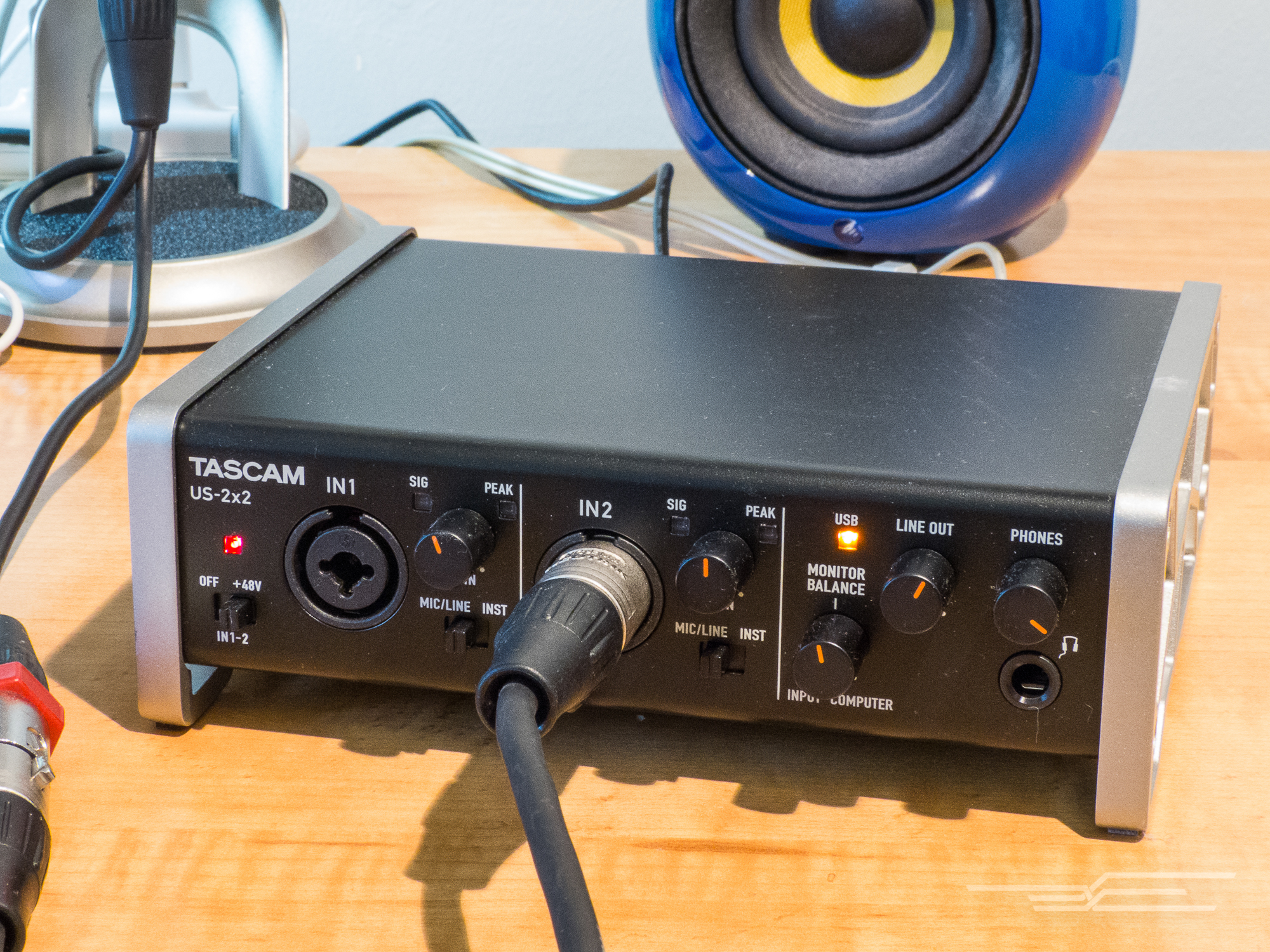
Photo: Al Griffin
The Tascam US-2×2 is our pick for the best two-channel USB audio interface for amateur musicians and podcasters. It offers consistently excellent recording quality and a design that’s more user-friendly and rugged than the other models we tested. The US-2×2 is also packed with useful features such as iPad support and a MIDI interface to enable the playing of software instruments using an external controller.
The low noise and ample gain provided by the US-2×2’s dual microphone preamps allow for use with a wide range of microphones, including more exotic condenser models. Its ability to capture the nuances of both acoustic instruments and vocals pushed it past the other models under evaluation to score a top rating in our recording sound-quality tests.
Tascam’s design for the US-2×2 elevates the front panel and positions it at a slight angle. This arrangement allows for easy access to the unit’s control knobs, which, unlike those on some of the other units we checked out, are spaced comfortably apart and provide good resistance when making adjustments.
Runner-up
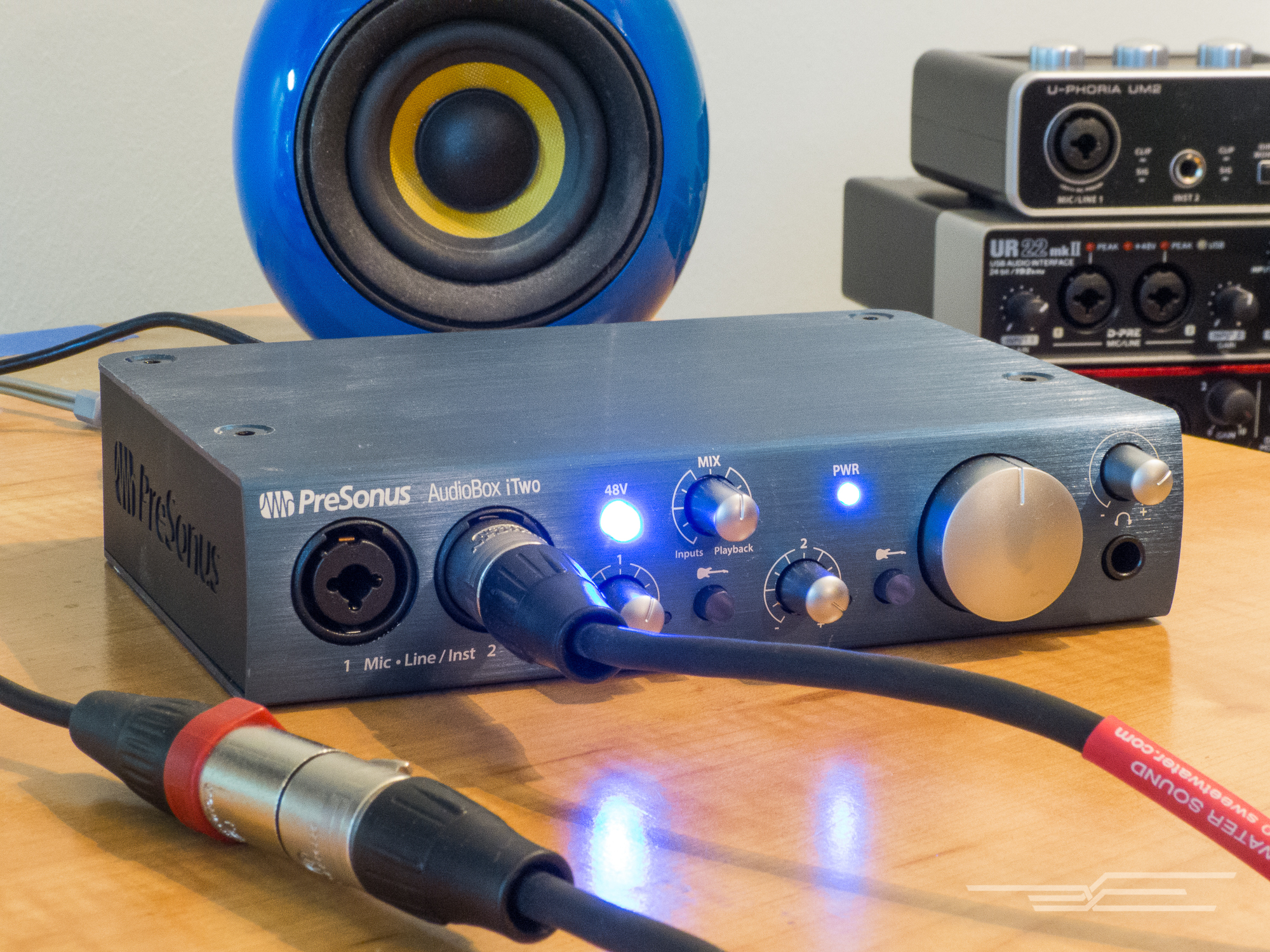
Photo: Al Griffin
Although it costs more than our main pick, the PreSonus AudioBox iTwo is also well worth considering. The AudioBox iTwo received high marks from our listening panel for its sound quality, with comments citing its ability to capture the natural decay of acoustic instruments as well as maintain spaciousness and detail even during loud passages. The AudioBox iTwo’s main trade-off from the Tascam pick is a less convenient ergonomic design: Input gain adjustment knobs are placed near the bottom of the unit’s front panel, making them somewhat difficult to access.
If you need to record more than two sources
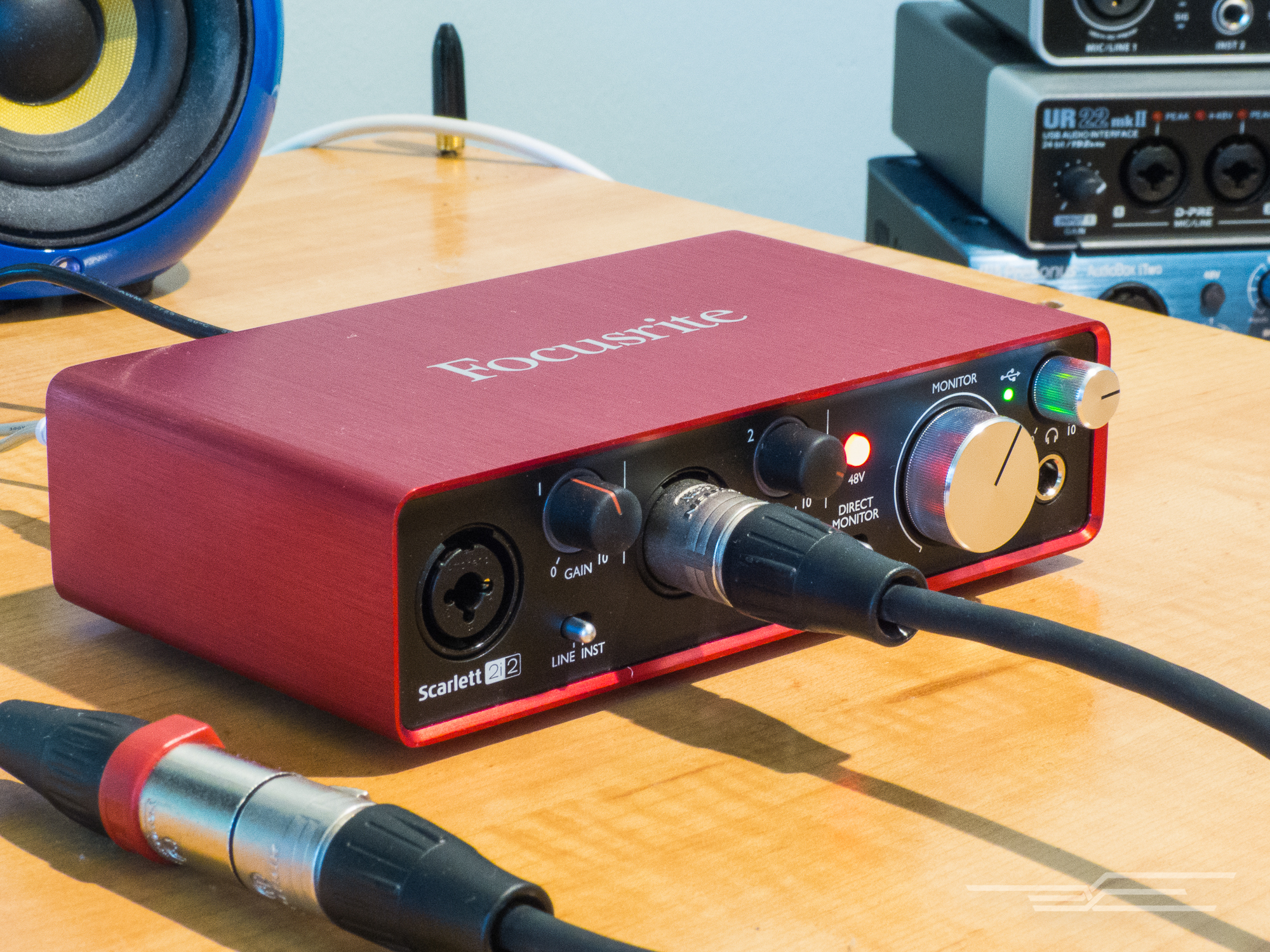
Photo: Al Griffin
The Focusrite Scarlett 6i6 features the same high-quality mic preamps and 192/24-capable DACs as the Scarlett 2i2 we evaluated for this guide, but adds features that the 2i2 lacks such as iPad connectivity and a 1×1 MIDI interface. Priced only $100 higher than the 2i2, it provides four additional ¼-inch inputs/outputs on the back beyond the twin XLR inputs on the front (for a total of six inputs). This lets you accommodate a wider range of recording scenarios, such as capturing the performance of a full band. Some panelists had a few criticisms of the Scarlett’s sound. This is what kept it from being a top pick. But it’s still a fantastic value if you need six inputs.
An affordable option for vocals and acoustic instruments
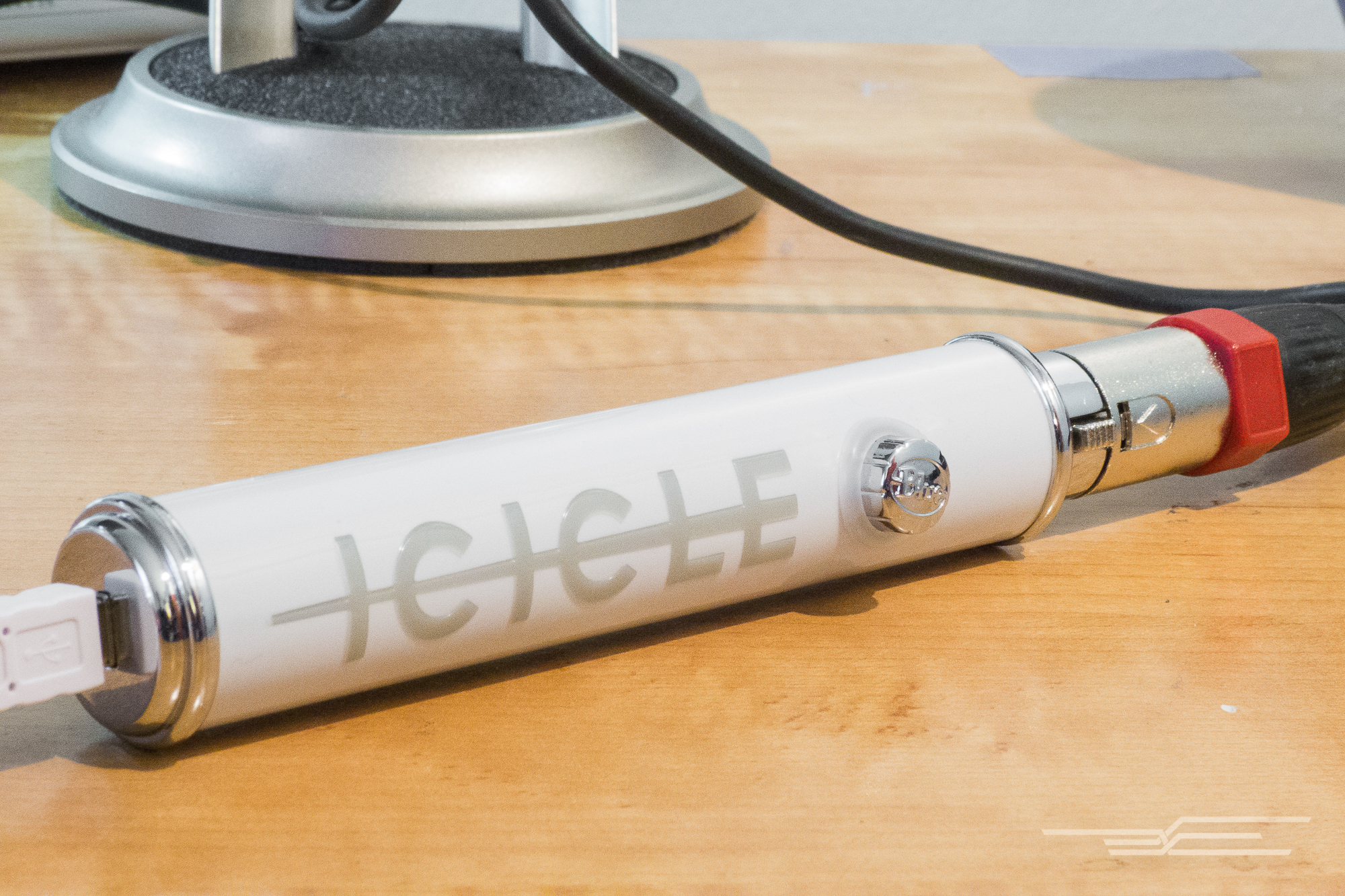
Photo: Al Griffin
The Blue Microphones Icicle is a great choice for those who don’t need to record guitars or keyboards and simply want to capture vocals or acoustic instruments. In contrast to the company’s Yeti, our pick for best all-in-one USB microphone, the Icicle is a basic audio interface that has an XLR input on one end for plugging in microphones, and a USB output on the other end to connect to a computer. It’s best thought of as an adapter to turn any XLR mic into a USB mic. The Icicle’s recording resolution maxes out at 16-bit/44.1 kHz (CD quality), which is plenty good enough, but below what the other interfaces are capable of.
This guide may have been updated by The Wirecutter. To see the current recommendation, please go here.
Note from The Wirecutter: When readers choose to buy our independently chosen editorial picks, we may earn affiliate commissions that support our work.





